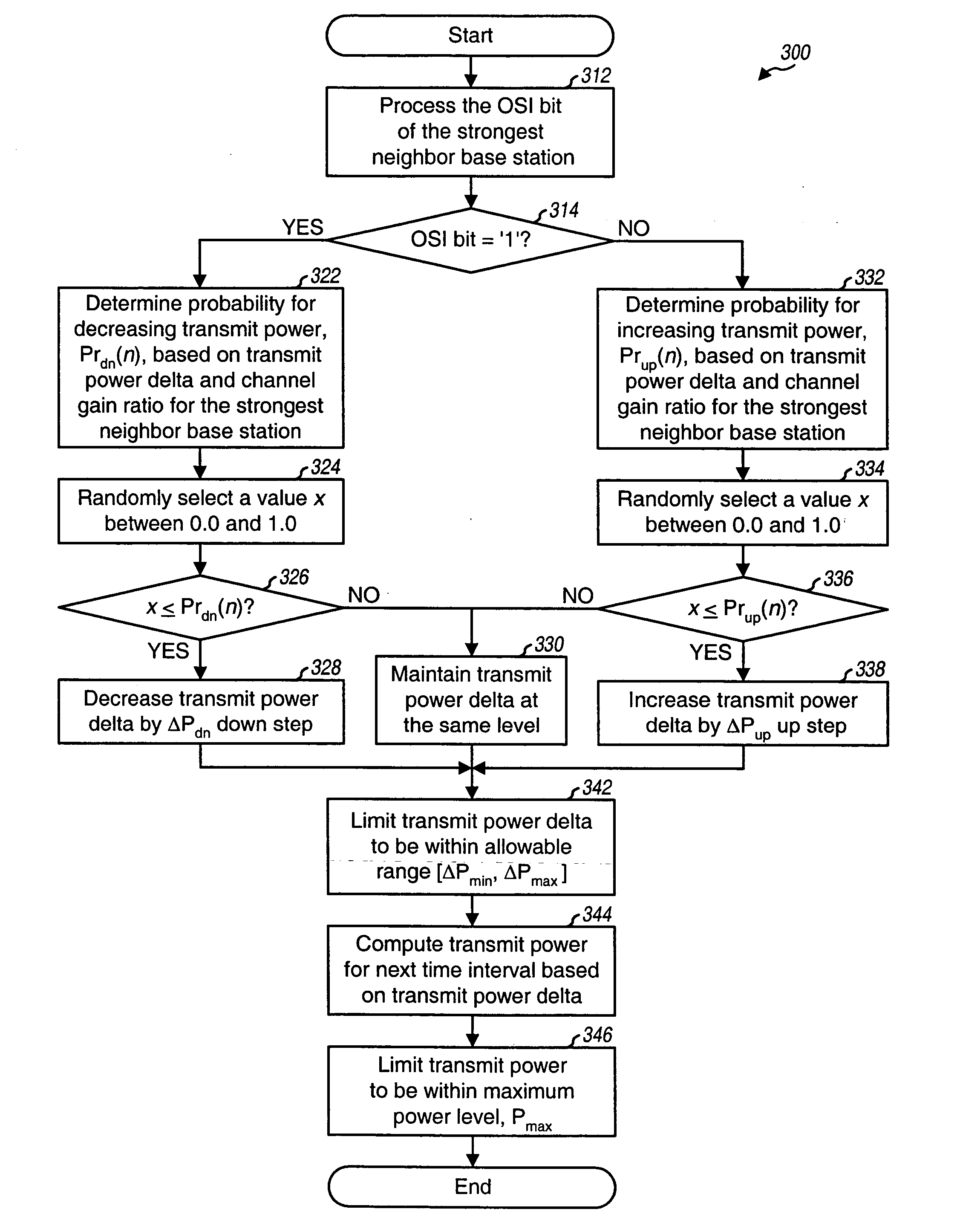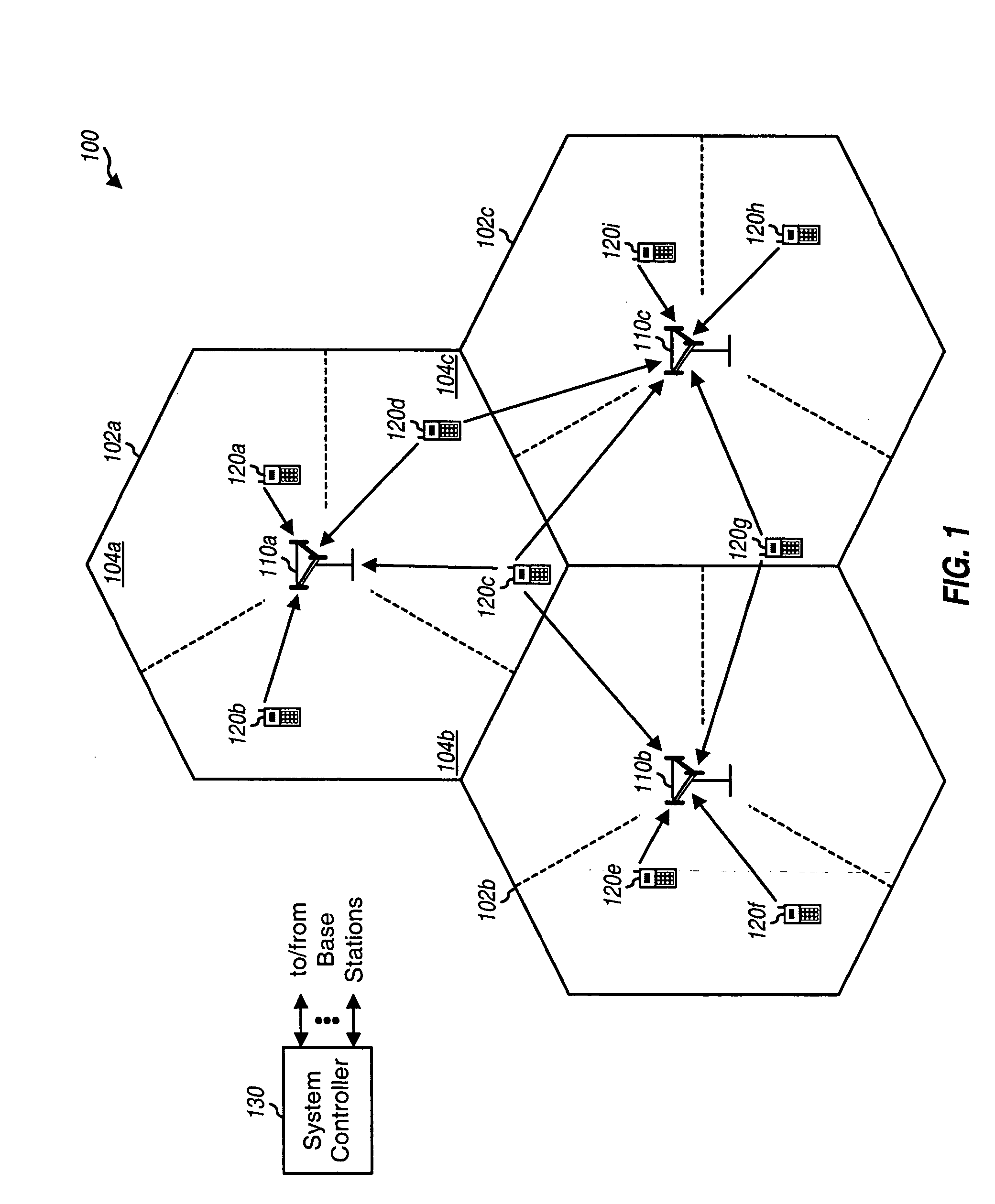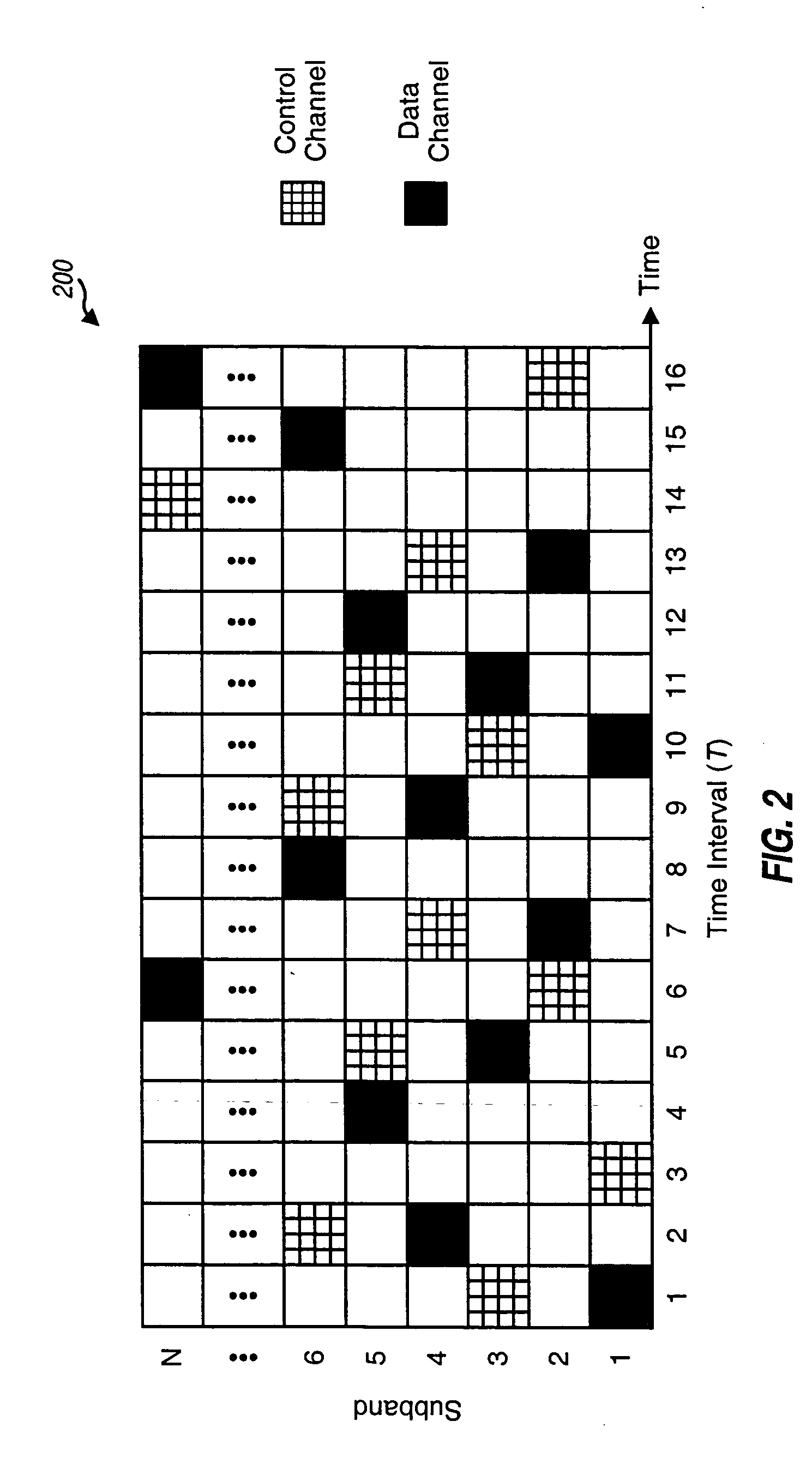Power control for a wireless communication system utilizing orthogonal multiplexing
a wireless communication system and power control technology, applied in the field of communication, can solve the problems of inability to achieve complete orthogonality between the transmissions of different terminals, interference to terminals communicating with nearby base stations, and large amounts of interference, so as to achieve the effect of reducing the transmission power
- Summary
- Abstract
- Description
- Claims
- Application Information
AI Technical Summary
Benefits of technology
Problems solved by technology
Method used
Image
Examples
Embodiment Construction
[0021] The word “exemplary” is used herein to mean “serving as an example, instance, or illustration.” Any embodiment or design described herein as “exemplary” is not necessarily to be construed as preferred or advantageous over other embodiments or designs.
[0022]FIG. 1 shows a wireless multiple-access communication system 100. System 100 includes a number of base stations 110 that support communication for a number of wireless terminals 120. Terminals 120 are typically dispersed throughout the system, and each terminal may be fixed or mobile. A terminal may also be referred to as a mobile station, a user equipment (UE), a wireless communication device, or some other terminology. A base station is a fixed station used for communicating with the terminals and may also be referred to as an access point, a Node B, or some other terminology. A system controller 130 couples to base stations 110, provides coordination and control for these base stations, and further controls the routing ...
PUM
 Login to View More
Login to View More Abstract
Description
Claims
Application Information
 Login to View More
Login to View More - R&D
- Intellectual Property
- Life Sciences
- Materials
- Tech Scout
- Unparalleled Data Quality
- Higher Quality Content
- 60% Fewer Hallucinations
Browse by: Latest US Patents, China's latest patents, Technical Efficacy Thesaurus, Application Domain, Technology Topic, Popular Technical Reports.
© 2025 PatSnap. All rights reserved.Legal|Privacy policy|Modern Slavery Act Transparency Statement|Sitemap|About US| Contact US: help@patsnap.com



